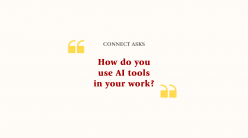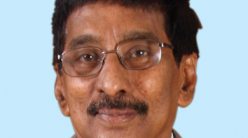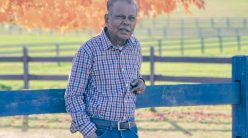A computational linguist-turned-information theorist talks about the nature of research
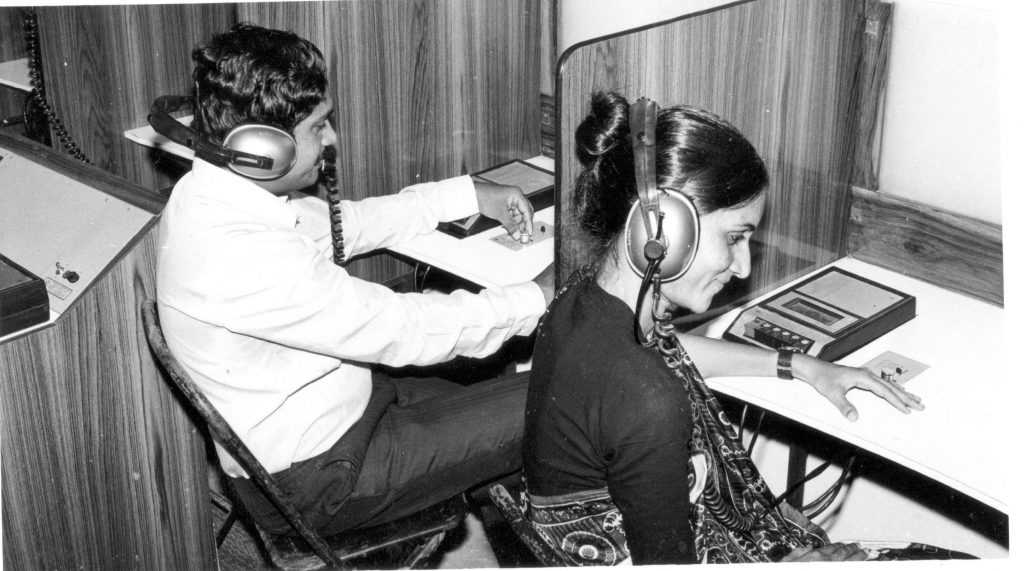
I was a Sanskrit Lecturer at Maharani’s College and BES College of Arts, Science and Commerce, while also carrying out research in language processing systems and information processing. This research was carried out in Maharani’s College in collaboration with Bangalore University. One day, I read an article published in Nature, titled “Relative Efficiencies of Indian Languages”, which claimed that Telugu was a more efficient language for communication than other Indian languages. I disagreed. Believing that Sanskrit is the mother of all Indian languages, I thought it should be considered a more efficient language. So, in 1974, I walked into IISc to make my arguments against the article, by confronting the author, BS Ramakrishna, Professor at the Department of Electrical Communication Engineering (ECE).
I met Ramakrishna who looked simple and nice. Soon, I began arguing with him on the subject. Amazed by my arguments, he asked, “You are right, but can you prove it? Do you know information theory?” I was perplexed. Eventually, he put me through a test in mathematics, which I cleared successfully. And I was glad to be told that I could be his student.
I chose a research career over the option of getting married and settling early in life
At the same time, the thought of pursuing a PhD abroad was lingering in my mind: I was selected by top universities such as Harvard University and University of California at Berkeley to work on Sanskrit in relation to Indo-European languages. However, my father was against sending me abroad – back then, in traditional families like mine, girls going abroad before marriage was taboo.
But destiny had something else in store for me. I chose a research career over the option of getting married and settling early in life. At IISc, The Foreign Languages Section (FLS) was looking for a person with a background in mathematics, sciences, computers and Sanskrit to work on translation and bilingual studies on syntactic patterns in widely divergent languages. I was the right fit, given my background in all the subjects. Ramakrishna also suggested that I join the project. Soon, I quit my job and joined IISc after passing an interview.
I learnt information theory from Ramakrishna. Being a wonderful teacher, he simplified complicated topics such as stochastic process, probability theory and semantic measurements.
In 1975, the project at FLS came to an end and I began looking for other jobs. Recognising my work, two people suggested that I join the Institute through a different route – clearing the Institute’s entrance examination. With some guidance and luck on my side, I topped the list.
I then joined IISc as a PhD student in the interdisciplinary stream, involving two departments, FLS and ECE. It was worth pursuing interdisciplinary research, while also building an interface between the two distinct departments. I must say that I was the only candidate with this background suitable for interdisciplinary research.
PhD and Postdoctoral research
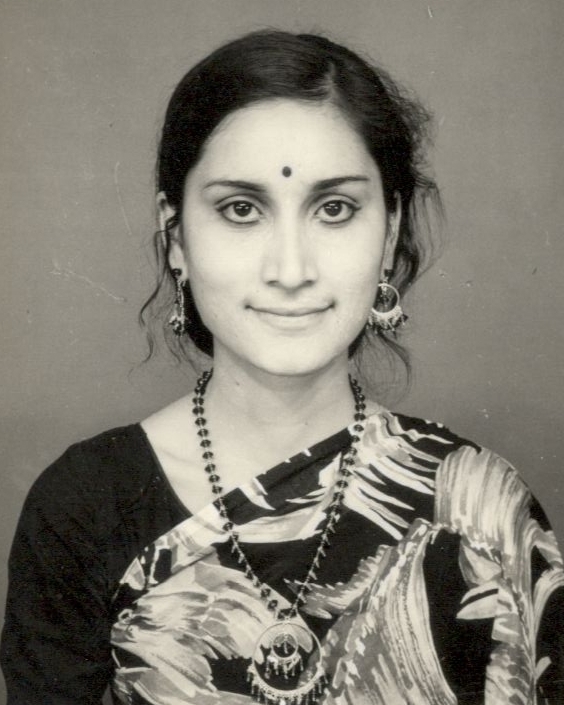
During my time at IISc, I extensively read anthologies of prose writings, discourses on style, expositions of communication theory, theories of perception, and so on, which in those days failed to elicit sufficient response, but one thing stuck in my mind, “Why not study literary prose style as a problem in the patterns of human communication, just as engineering people study fingerprints, handwritings or aerial surveys?” It was a fascinating analogy to be pursued further, but how would I know communication theory, pattern recognition theory and all such esoteric theories on which people were working on? I moved from one expert to another, learning from them.
One thing stuck in my mind, “Why not study literary prose style as a problem in the patterns of human communication, just as engineering people study fingerprints, handwritings or aerial surveys?
My thesis answers the question, “Can art and science be married?” Moral support for this unification of science and art – the topic of my thesis – came from Rangaswamy Narasimhan, a computer and cognitive scientist. Due to the complexity and special nature of my work, there was a delay in my thesis submission: I spent three years on coursework, both at IISc and elsewhere. Obtaining an extension proved to be difficult. To help me, G Clairon, the then Chairperson of the Foreign Languages Section, and PS Narayanan, the then Divisional Chairman of Physical and Mathematical Sciences, reviewed the issue and extended time for thesis submission. Clairon, in fact, volunteered to pay my thesis fees, since I was a unique student of both FLS and ECE!
I continued my association with the Institute as a postdoctoral fellow. In 1984, the Director, CNR Rao called to inform me about a job posting at the Electrical Engineering (EE) Department. Bagging it, I worked on natural language understanding of block world manipulation of robotics for two years with YV Venkatesh and G Krishna professors at the Department of Electrical Engineering and School of Automation respectively. It was here that I learned about image processing, computer vision, pattern recognition and artificial intelligence. VVS Sarma, a professor at the School of Automation, guided me in these areas, while at the Institute and thereafter too.
People who influenced me
People who influenced me profoundly are Ramakrishna, Satish Dhawan, former Director of IISc, and H Narasimhaiah, a noted educationist and former Vice-Chancellor of Bangalore University. In my initial days, I went through highs and lows: when an occasional input struck me, my spirits soared high, but this didn’t last long when I realised that someone else had already claimed those ideas. After going through this a couple of times, I concluded that research was not for me, but Ramakrishna convinced me otherwise. “Such discoveries,” he said, “should strengthen your conviction that you are on the right track and that you can make the right kind of observations, never mind whether it is for the first time or not. Rediscovery is a prelude to discovery.” Besides being my thesis adviser, Ramakrishna was also my spiritual guide.
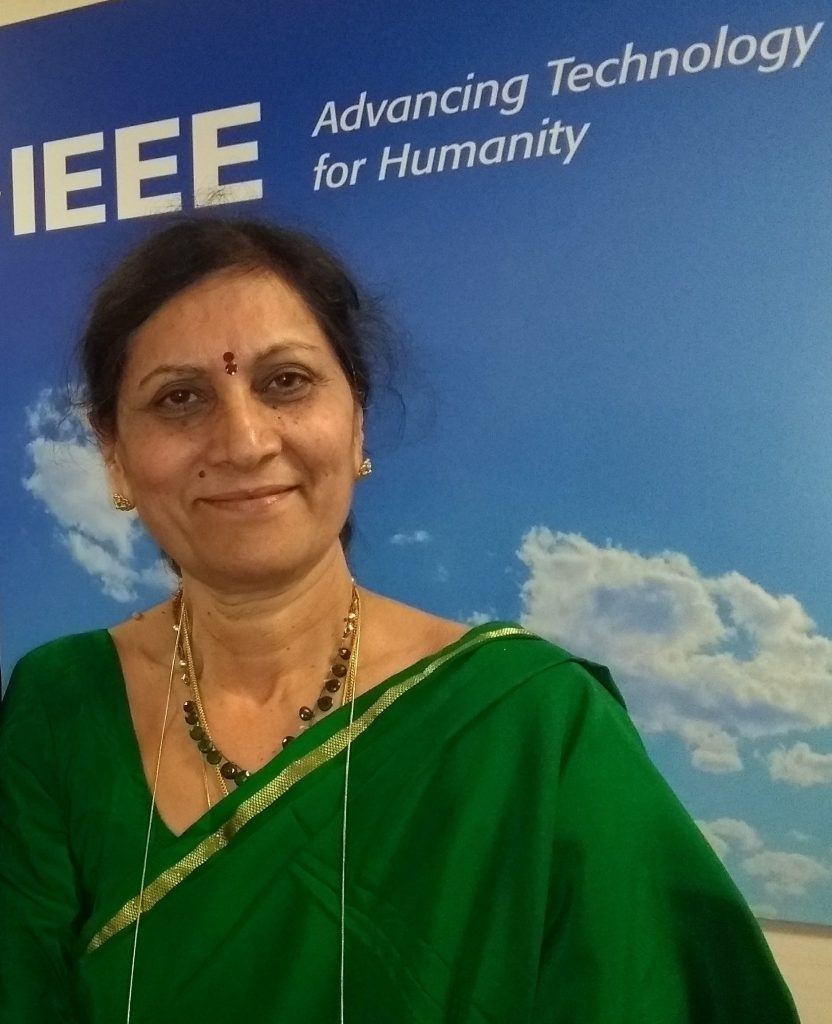
Dhawan, with his own interests and a degree in English literature, admired my research interests, and continued to support the area of stylistics. He was keen that I study Bernard Shaw’s style of writing. Further, Dhawan and Ramakrishna urged me to develop hardware for style of writing similar to speech-recognition system (VOCODER), developed at Bell Labs. This is yet to be done at the Institute and is worth taking up even today. We had several meetings and it was suggested that I focus on literary prose style, from the view of communication theory that is different from the run-of-the-mill work in the areas of stylistics, linguistics and socio-linguistics.
Dhawan took great interest in my coursework and sent me to the Central Institute of English and Foreign Languages, Hyderabad, to study advanced courses in Transformation Grammar, and other related topics, that were important in the study of computational linguistics and also to conduct experiments on “The Perception of Style”.
After completing several courses in Hyderabad, I returned to the Institute to give my comprehensive examination, which I successfully cleared. I was probably the only student whose exam was conducted in the Director’s office. Dhawan felt the need for a department where interdisciplinary research can be carried out: to use scientific methods to address social problems, which could have a direct impact on society. I am sure that was the starting point for multidisciplinary research at the Institute.
Moving on and my return to my alma mater
Deekshatulu, an alumnus of IISc, who had earlier spoken to me about my research during one of his visits, interviewed me informally for a Visiting Scientist position at the Hyderabad-based National Remote Sensing Agency (NRSA), which he was then heading. He enquired if I would be interested in working on a remote-sensing application using artificial intelligence techniques, particularly for building an expert system for soil taxonomy. I was hesitant to accept the offer as I knew my father would not allow me to leave Bangalore, but Narasimhaiah intervened and persuaded my father to send me to Hyderabad. I was, later, formally interviewed at NRSA and offered the post.
Using remote sensing and ancillary data with a logic programming language, PROLOG, I built an expert system for soil taxonomy
So, in 1987, I left for Hyderabad. Through training programmes and discussions with experts, I learnt a host of subjects, such as remote sensing and its applications, geology, geomorphology, soil science, and so on. Using remote sensing and ancillary data with a logic programming language, PROLOG, I built an expert system for soil
taxonomy. I did this work just before the Indian Space Research Organization (ISRO) launched its first Indian
Remote Sensing satellite.
Besides teaching and research work, I have published several papers and reports, including the IEEE Transactions
paper during my PhD programme, and thereafter while at various places in Hyderabad, such as Hyderabad University, Jawaharlal Nehru Technological University, Advanced Data Processing Research Institute, Institute of Public Enterprises, BR Ambedkar Open University, Centre for Ecological and Social Sciences, and so on.

During the Institute’s Platinum Jubilee celebrations, I was fortunate enough to meet JRD Tata, who admired my work in interdisciplinary areas. He suggested that I work at the National Institute of Advanced Studies (NIAS), which he had planned to set up at the Institute, aiming to bring classical sciences, humanities, anthropology, archaeology and epigraphy to the forefront.
One day, the then Director of NIAS, Raja Ramanna, invited me to deliver a talk. Immediately after the talk, he offered me a faculty position at NIAS. I worked in an area concerning archaeology and epigraphy, which I wished to do at IISc itself. Since 2002, I have been fortunate enough to be associated with students as a faculty member at the Centre for Continuing Education, IISc.
The good old days
It is a pleasure to recall my time as a student at the Institute. I had the opportunity to work under the Students Assistance Programme at different centres, including the Library, Computer Centre, Mess, and the like. This gave me exposure to activities at the Institute. I was an active member of several groups such as the Students’ Council (as its Secretary), and mess committee, and also as the hostel warden.
I recall an incident that reflected the strength of student community: a student (whose name I cannot mention) was not receiving his scholarship due to a delay in his thesis submission. He had no money to support himself. We formed a group of nine to help him. Speaking to professors, we found that the delay in his thesis submission was not due to his actions, but rather due to that of his guide. After probing further, we realised that in many cases, the delay was due to his guide going on a sabbatical abroad, working on a consultancy project, or shortage of chemicals and instruments in the lab. And students were being punished for no fault of theirs. After several rounds of negotiations with the Director and the Council, we were successful in convincing the Institute to sanction scholarships and to extend the time for thesis submission.
It was through my initiative that the Institute built a new hostel for ladies. We remember the pleasant days in our hostel which had security, healthy atmosphere and environment. The food in the mess was something to remember always – in particular the idli sambar or masala dosa on Sunday mornings at A Mess.
During my PhD, I started the Samskruta Sangha along with two others. We initiated many programmes to bring
in ancient wisdom and classical sciences to the modern world and encourage cross-cultural activities. We organised lectures, discourses and other activities on a variety of topics. This created an environment where members belonging to different groups, such as the Kannada Association, Telugu Association, Bengali Association and others, mingled and freely exchanged ideas. The Gymkhana was one such place where we discussed many things, including sports and music. I was also responsible for initiating swimming classes for ladies.
I would like to add that about eight members of my family, beginning with my father, have had associations in some way or the other with IISc. One significant paper by Ramakrishna and his team attracted me to the Institute, and destiny allowed me to continue my association with it, for a long time. I was very fortunate to find the most lovable life partner in SR Anantha Krishnan, who was also an alumnus of the Institute. It is most unfortunate that he passed away recently. The loss is unbearable, but I am enduring it by pursuing some of his unfinished scientific work, which we both thought would offer solutions to future energy problems.
Anasuya Devi is Professor, Research Lead and Technical Advisor at National Design and Research Foundation, Bangalore
This is an edited version of Anasuya Devi’s account in “Down the Memory Lane”, published by IISc’s Alumni Association in 2009. For more stories in this series, follow these links:
